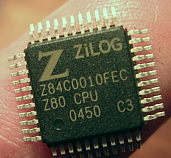MEng/BEng projects possibilities for 2013-2014
Dr Robert Watson

|
 |
Final year projects
This page just serves as a list of ideas for possible projects that I am willing to run. A lot of these involve both hardware (RF and general electronics) and software (Matlab, Python, C, C++):
Adaptive cancellation antenna for
mitigating GPS interference: direction-of-arrival.
The aim of this project is to develop an interference resistance
antenna for mitigating the effects of unintentional or intentional
interference on GPS. There are two hardware subsystems that need to
be accomplished to achieve this. The first is system that determines
direction-of-arrival of an interference signal (this project). The
second is a system that using the direction-of-arrival information,
steers an antenna pattern null towards the interference source
(companion project). This project will entail background research
into direction-of-arrival hardware and algorithms. The project will
construct a direction-finding array and interface to a suitable
platform (e.g., Beaglebone
Black) for signal processing. To allow for easy testing the
prototype system will be constructed to use 2.45GHz (the
license-free ISM band). This project is best suited to an MEng
student, ideally someone who has interest in RF engineering and
circuit design
Adaptive
cancellation antenna for mitigating GPS interference:
null-steering.
The aim of this project is to develop an interference resistance
antenna for mitigating the effects of unintentional or intentional
interference on GPS. There are two hardware subsystems that need to
be accomplished to achieve this. The first is system that determines
direction-of-arrival of an interference signal (companion project).
The second is a system that using the direction-of-arrival
information, steers an antenna pattern null towards the interference
source (this project). The project will entail background research
into null-steering antenna arrays and algorithms. The project will
construct a simple four-element beamforming system based on a
single-chip vector modulator and interface to a suitable
platform (e.g., Beaglebone
Black) for signal processing. To allow for easy testing the
prototype system will be constructed to use 2.45 GHz (the
license-free ISM band). This project is best suited to an MEng
student, ideally someone who has interest in RF engineering and
circuit design.
These are the first few that come to mind, but I have lots of other ideas. If you are interested in any of these, send me an email.